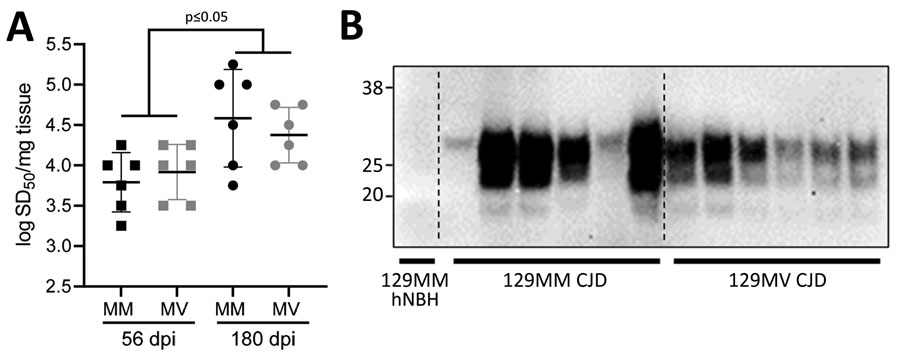Volume 30, Number 6—June 2024
Research
Lack of Transmission of Chronic Wasting Disease Prions to Human Cerebral Organoids
Figure 2

Figure 2. Demonstration of infection and accumulation of MV2 sporadic CJD prions in human cerebral organoids in study of lack of transmission of chronic wasting disease prions to human cerebral organoids. Both the 129MM and MV organoids were infected with MV2 sporadic CJD prions to ensure uptake and accumulation could be measured in both lines. A) Real-time quaking-induced conversion seeding activity; B) accumulation of protease resistant prion protein were assayed at 56 and 180 dpi. Each marker in panel A represents the organoid from an individual with the means and SDs of all organoids per condition indicated. Panel B indicates Western blots using prion 3F4 antibody following protease digest of lysates from 2 representative MM and 2 representative MV organoids that received the same starting inoculum (MV2 CJD) along with a 129MM 180dpi organoid that received hNBH. CJD, Creutzfeldt-Jakob disease; dpi, days postinoculation; hNBH, human normal brain homogenate.
1These authors contributed equally to this article.